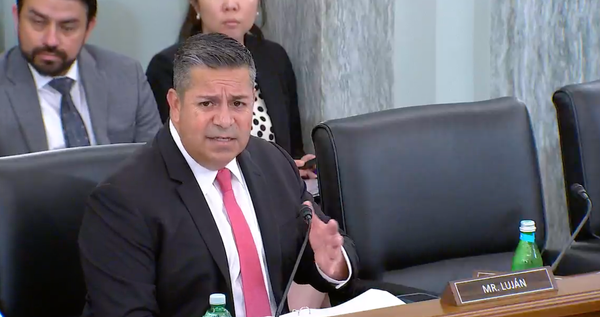Broadband Stimulus Grants Commenters Urge Focus on Rural Areas
WASHINGTON, April 9, 2008 – Commenters to the Commerce Department’s National Telecommunications and Information Administration’s broadband grants web page on Wednesday, April 8, continued to urge that the NTIA ensure that rural areas are given priority when funds are disbursed.
WASHINGTON, April 9, 2008 – Commenters to the Commerce Department’s National Telecommunications and Information Administration’s broadband grants web page on Wednesday, April 8, continued to urge that the NTIA ensure that rural areas are given priority when funds are disbursed.
Global Crossing wrote to emphasize the importance of so-called “middle-mile” facilities. The company specifically urged NTIA to partner middle-mile providers, such as Global Crossing, with last-mile providers – those offering service to customers – so as to avoid duplicate networks.
Global Crossing states that it faces a “chicken and egg” problem: it is unable to speculatively roll out middle-mile facilities to unserved areas. It hopes that last-mile providers in unserved areas will become apparent as the application process moves forward, allowing them to provide middle-mile facilities to these new carriers. http://www.ntia.doc.gov/broadbandgrants/comment.cfm?e=FA827593-BAB1-4760-B6B2-7CB8A1835B46
Several local officials wrote to emphasize the work that Connected Nation, and specifically its Connect Kentucky, Connect Ohio, and Connect Tennessee projects, has completed in their areas. They urged the NTIA to ensure that such projects are eligible for funding.
Paul Bergman, a member of Lake County Minnesota’s Board of Commissioners, wrote to emphasize the plight of rural counties. Bergman said he understood that counties such as his have a low return on investment for carriers. However, he said he hoped that program funds would help “level the playing field for underserved counties,” with more jobs and education opportunities for children. http://www.ntia.doc.gov/broadbandgrants/comment.cfm?e=CC298D32-6E27-4ABC-BC83-7B3FBC4B987E
John Gabis, executive director of the PACCAR Medical Educational Center, stated, “in Appalachia, the next highway is the broadband highway.” Broadband could help PACCAR provide live and recorded healthcare to rural healthcare professionals, he said. http://www.ntia.doc.gov/broadbandgrants/comment.cfm?e=8BA38788-0D9F-4FF0-9BDF-9BC1BB7BB23E
Marcus Bost, of the Southern Ohio Health Care Network, urged policymakers to examine the metrics available. For example, 94 percent of households have a broadband connection, but 41 percent of Ohio’s surface area does not have a broadband connection. This represents nearly 500,000 people in the 34 counties covered by Connect Appalachia. http://www.ntia.doc.gov/broadbandgrants/comment.cfm?e=29DA6DCC-A3CF-417E-B289-C76C5F86328B
The Washington Public Utility Districts Association requested that high standards should be set, and that competition should be encouraged, since competition means “lower price, more choice, and better service.”
The Wisconsin Department of Commerce suggested that NTIA focus on communities defined as “low income communities,” as defined by the Treasury Department’s Community Development Financial Institutions Fund. These communities could be further limited by targeting those defined as rural communities. http://www.ntia.doc.gov/broadbandgrants/comment.cfm?e=F2D69848-B178-43FE-9B4E-1B02AD68F8DD
Unserved should be defined as an area where less than 50 percent of households have access to a digital subscriber line (DSL) or cable connection. An underserved area should be one where less than 50 percent of houses subscribe to a DSL or cable connection, regardless of availability.
The Wireless Communication Alliance stated that now is the time to experiment with new technologies, since our networks are transitioning from copper to fiber. Experience should play a part in selection criteria, as well as projects that expand public computer centers. http://www.ntia.doc.gov/broadbandgrants/comment.cfm?e=F25DE927-B543-4231-A6D3-3275B25360F4
Broadband Breakfast Club
Don’t miss the opportunity to register for the April 14, 2009, Broadband Breakfast Club at the Old Ebbitt Grill. The theme of the April meeting will be, “Spending the Stimulus: Can States’ Front-line Experiences Expedite Broadband Deployment?” Register at http://broadbandbreakfast.eventbrite.com.
Confirmed speakers include Karen Jackson, Office of Telework Promotion and Broadband Assistance, Commonwealth of Virginia; Betty Ann Kane, Chairman, D.C. Public Service Commission; and Sue A. Suleski, Technology Investment Specialist and Program Manager for the Pennsylvania Broadband Initiative.









